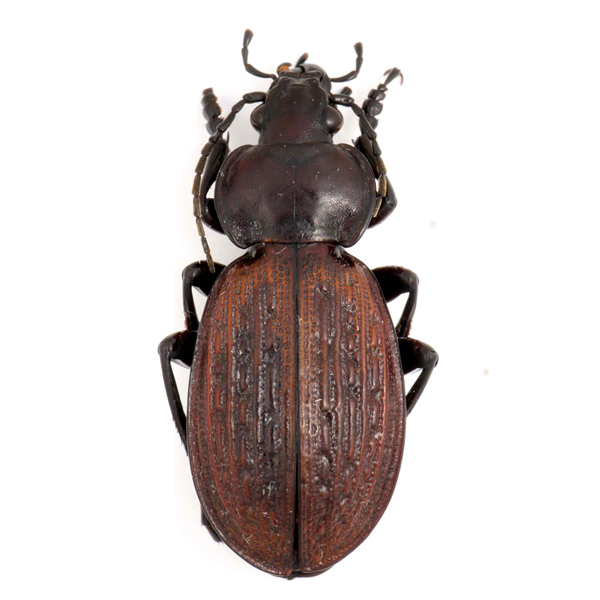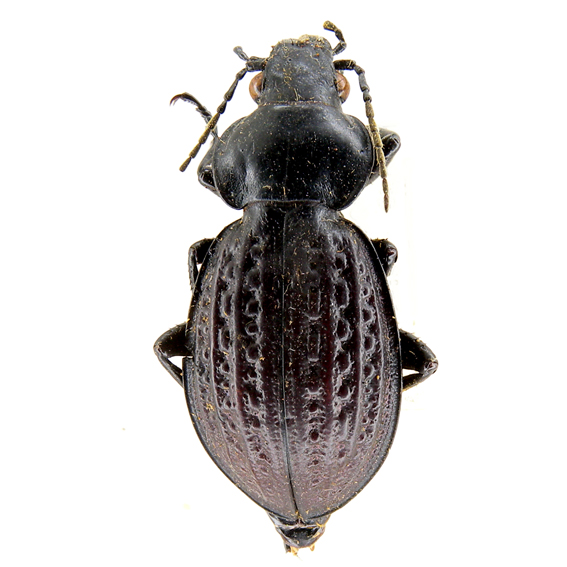Subgenus Carabomorphus Kolbe, 1895
Carabomorphus Kolbe, 1895: 57 (type: brachycerum Gerstaeker, 1884)
the species of African wingless Calosoma, exclusive of the mountain habitat of heath and grassland, belong to the genera (or sub-genera in our interpretation): Carabops, Orinodromus and Carabomorphus. Their origin should be traced back to, according to Jeannel (1940: 64), to the Castrida - Caminara phyletic line, and they should be derived from an ancestor of Campalita – Caminara group. Limited to Carabomorphus, these phylogenetic hypotheses would be at least partially confirmed by the results of mitochondrial analysis (Toussaint and Gillet, 2017: 12).
All the African flightless Calosoma, being their hind wings non functional or reduced to a stump , have their elytral humeri attenuated and lacking any indentation on their margin,. The species of Carabomorphus, that we consider as a subgenus, as well as the ones of Orinodromus and Carabophanus, have also smooth mandibles and reduced metaepisterna without punctuation. Moreover the three species of Carabomorphus, which has undergone the more extreme evolution, can be easily recognized because of the overdevelopment of the ligule of the penis.
The body shape is roughly similar in all these species. The sculpture of the elytra has 16 intervals, all of them of the same width and height. It is so in C. brachycerum, and it is so in populations of C. catenatum and C. masaicum living at medium altitudes, while in the populations of the last two species mentioned, living at higher altitudes, the sculpture of the elytra is characterized by diversely developed intervals. Basilewsky (1965 and 1977) had already noted the evolution of the elytral sculpture with the increase of altitude, which occurs in parallel in both species.
In the case of C. brachycerum, found in Tanzania, on the slopes of Mount Kilimanjaro and Mount Meru the presence into two mountains separated by dry savanna, of two populations that are not differentiated morphologically led to suggest the existence of some sort of bridge in recent colder times (Brühl 1977: 238).
C. catenatum and C. masaicum are found in Kenya: on the Mount Kenya and Monts Aberdare, and on the bottom and on both sides of the terminal part of the Rift Valley. The species are practically identical at medium altitude, unless examination of male genital. At higher altitudes they give rise to a series of strikingly different populations that, as we have already told, seem to evolve parallel in the two species.In these cases it is difficult to decide the actual isolation, given by the altitudinal belts, of the populations and on their systematic position. So, also taking into account the existence of numerous transitional forms, rather than interpreting any population morphologically differentiated as a distinct subspecies, it seem to be preferable to collect, at least temporarily, these populations in a few large clusters that can be considered as distinct subspecies


